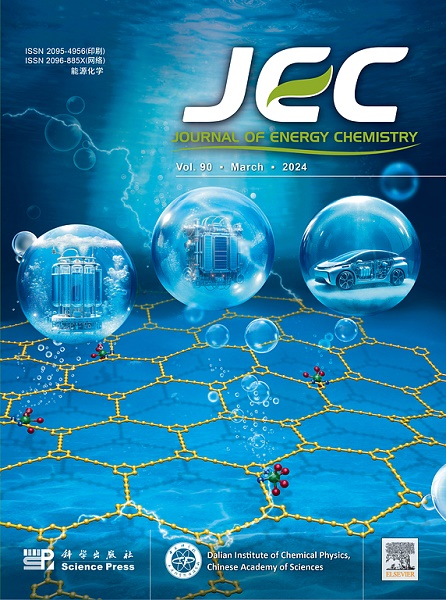Perovskite and copper indium gallium selenide: A wonderful marriage for tandem photovoltaics with efficiency approaching 30%
IF 13.1
1区 化学
Q1 Energy
引用次数: 0
Abstract
Tandem solar cells (TSCs) represent an attractive technology that can overcome the single-junction Shockley-Queisser limit. Recently, a tandem structure combining wide-bandgap metal halide perovskite with complementary bandgap copper indium gallium selenide (CIGS) photovoltaic technology has demonstrated a realistic pathway to achieve the industrialization goal of pushing power conversion efficiency (PCE) approaching 30% at low-cost. In this review, we first pinpoint the unique advantage of perovskite/CIGS tandems with respect to the other mainstream photovoltaic technologies and retrospect the research progress of perovskite/CIGS TSCs from both PCE and stability perspective in the last years. Next, we comprehensively discuss the major advancements in absorbers, functional layers of the individual sub-cell, and the interconnection layer between them in the recent decade. Finally, we outline several essential scientific and engineering challenges that are to be solved toward the development of efficient, long-term stable, and large-area perovskite/CIGS TSCs in the future.

求助全文
约1分钟内获得全文
求助全文
来源期刊

Journal of Energy Chemistry
CHEMISTRY, APPLIED-CHEMISTRY, PHYSICAL
CiteScore
19.10
自引率
8.40%
发文量
3631
审稿时长
15 days
期刊介绍:
The Journal of Energy Chemistry, the official publication of Science Press and the Dalian Institute of Chemical Physics, Chinese Academy of Sciences, serves as a platform for reporting creative research and innovative applications in energy chemistry. It mainly reports on creative researches and innovative applications of chemical conversions of fossil energy, carbon dioxide, electrochemical energy and hydrogen energy, as well as the conversions of biomass and solar energy related with chemical issues to promote academic exchanges in the field of energy chemistry and to accelerate the exploration, research and development of energy science and technologies.
This journal focuses on original research papers covering various topics within energy chemistry worldwide, including:
Optimized utilization of fossil energy
Hydrogen energy
Conversion and storage of electrochemical energy
Capture, storage, and chemical conversion of carbon dioxide
Materials and nanotechnologies for energy conversion and storage
Chemistry in biomass conversion
Chemistry in the utilization of solar energy
 求助内容:
求助内容: 应助结果提醒方式:
应助结果提醒方式:


